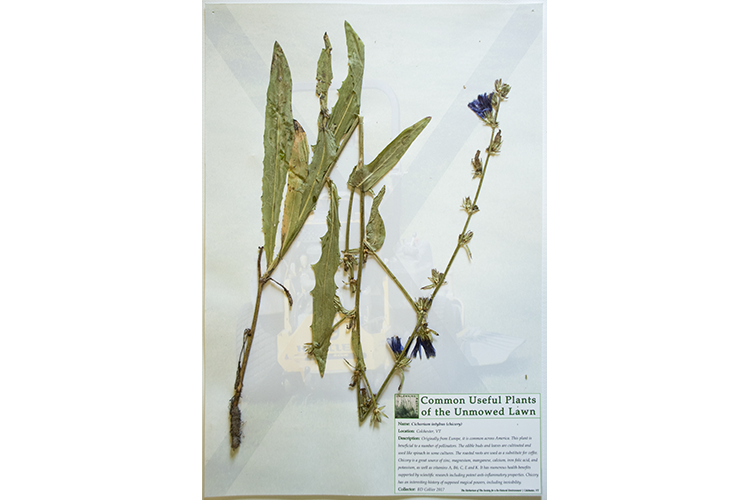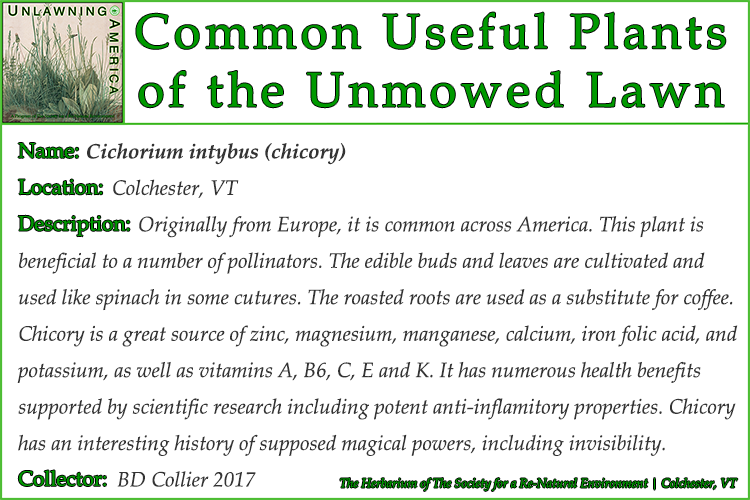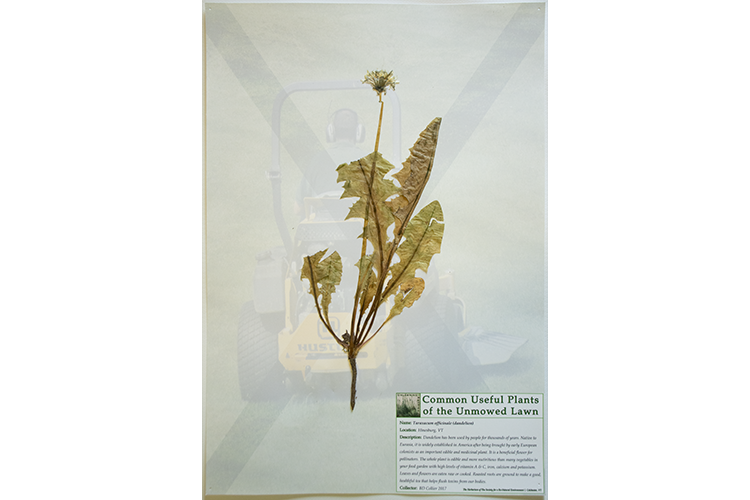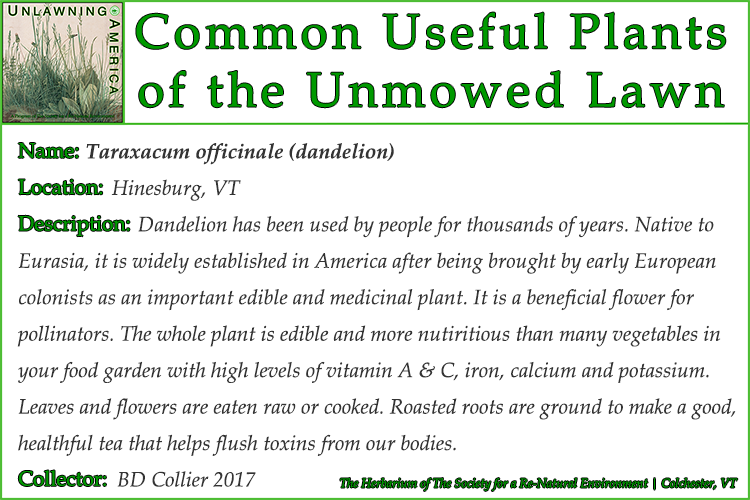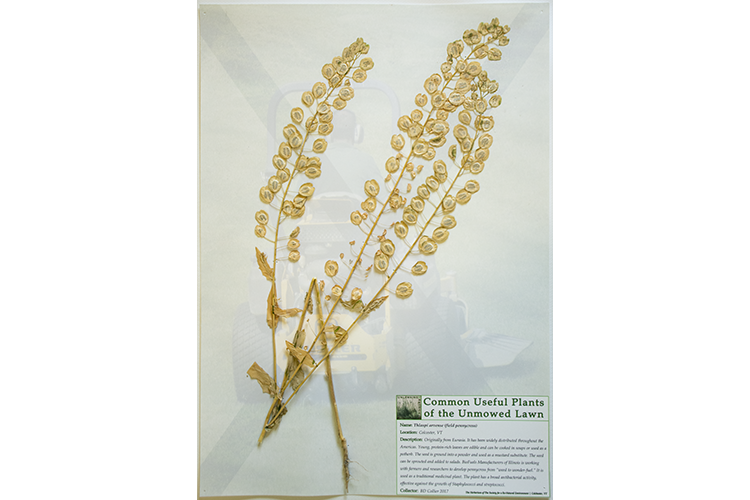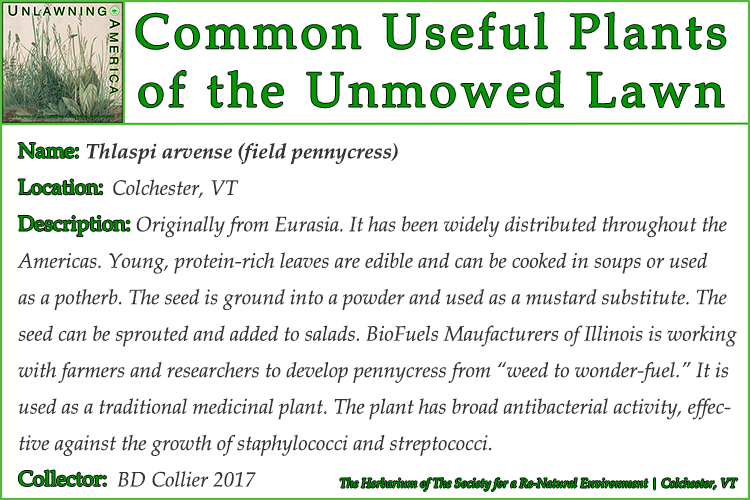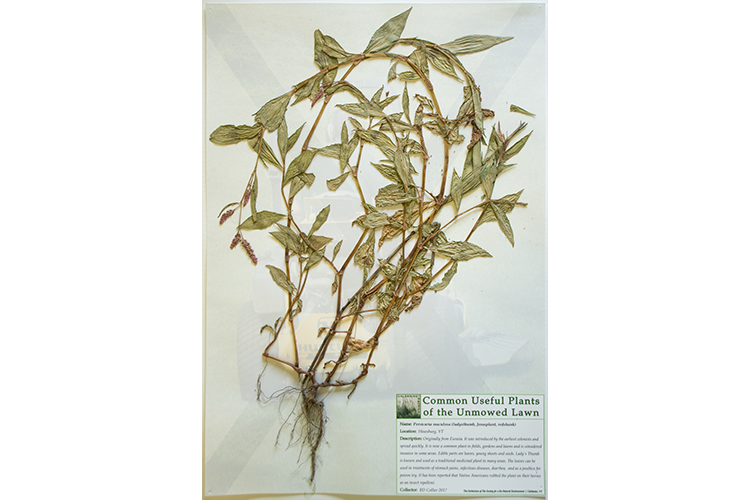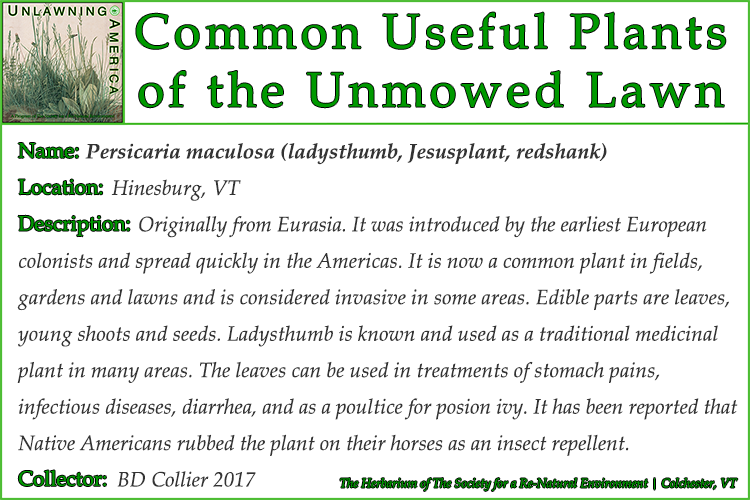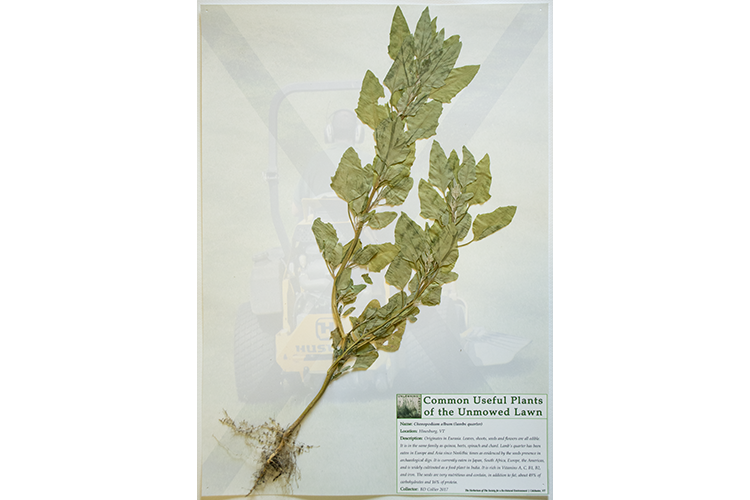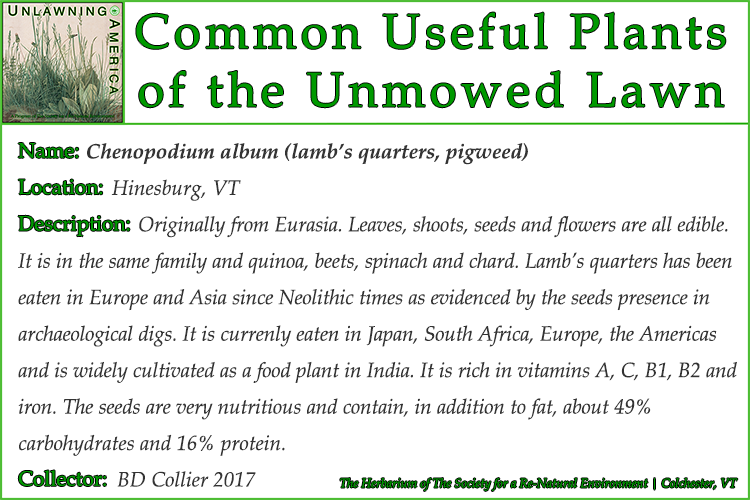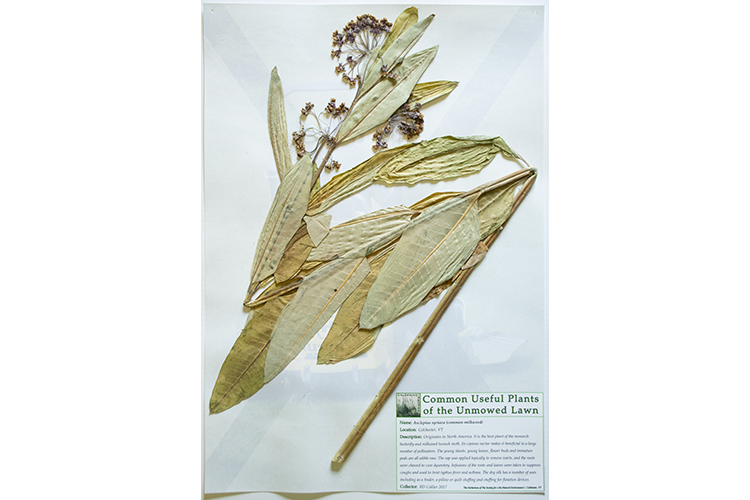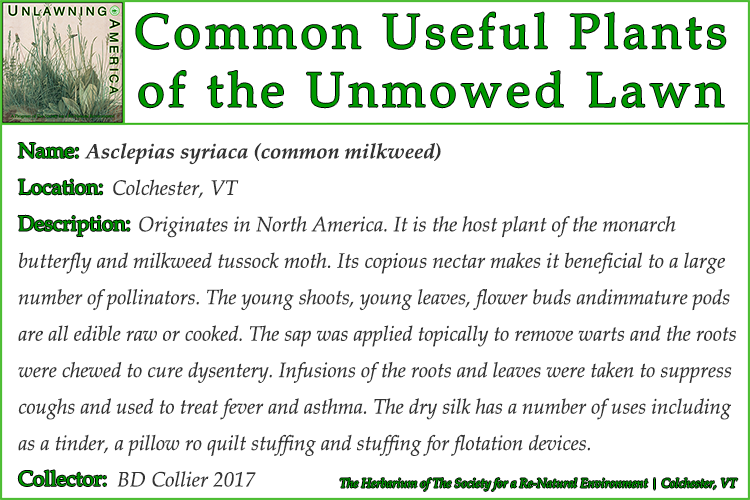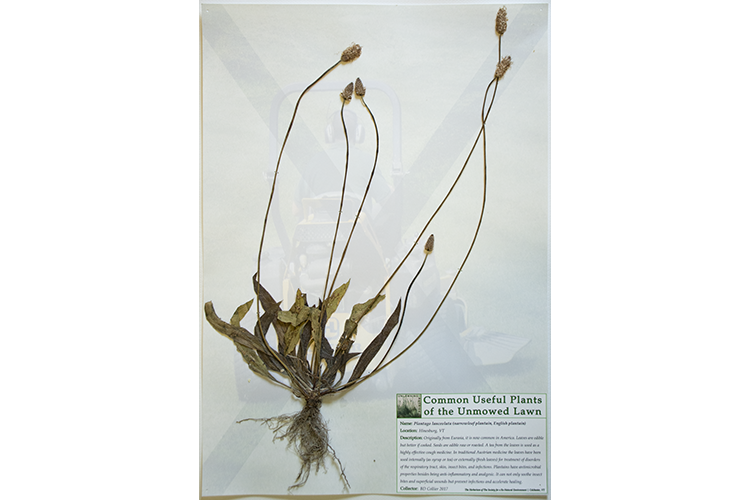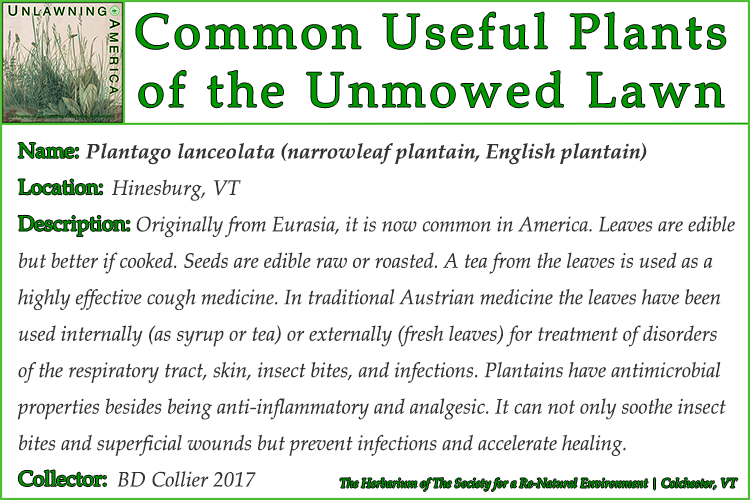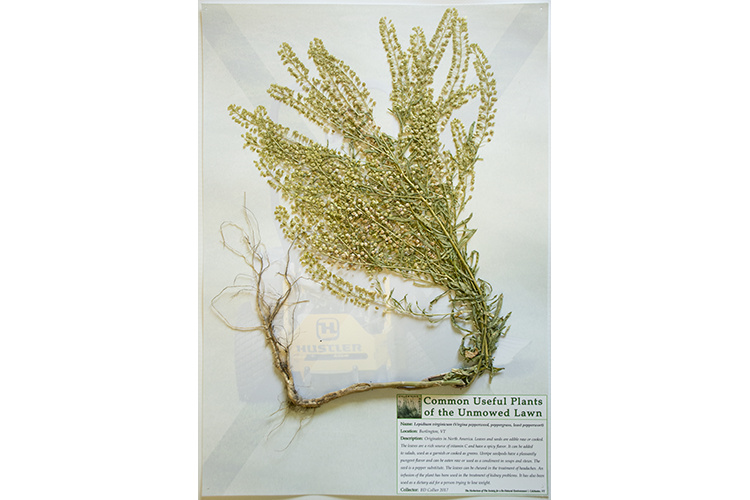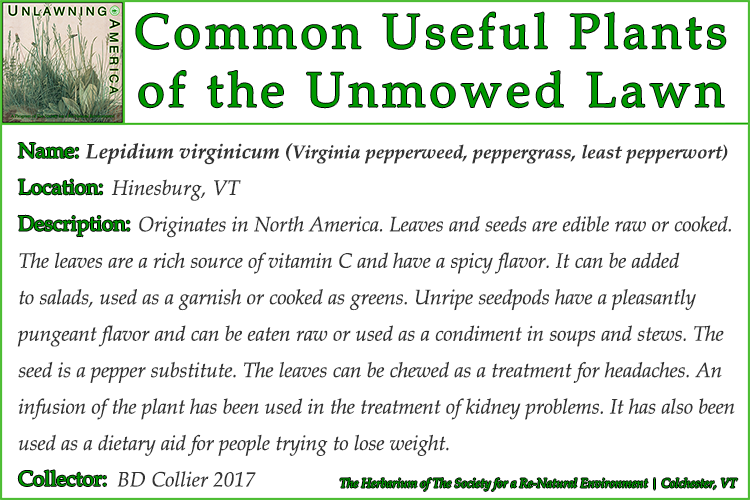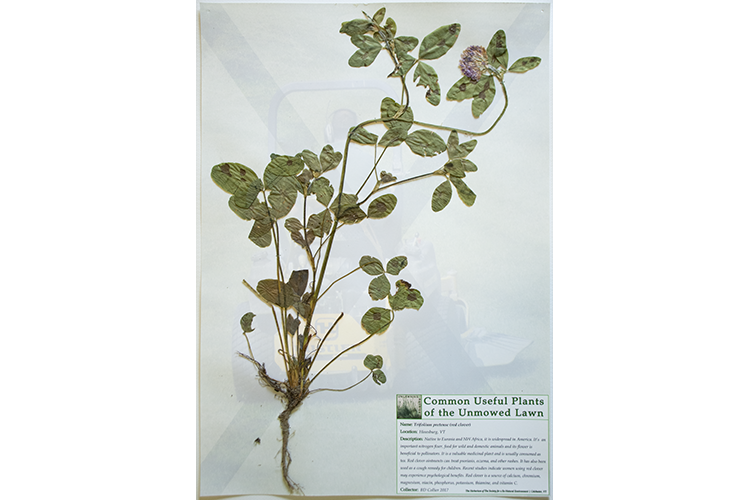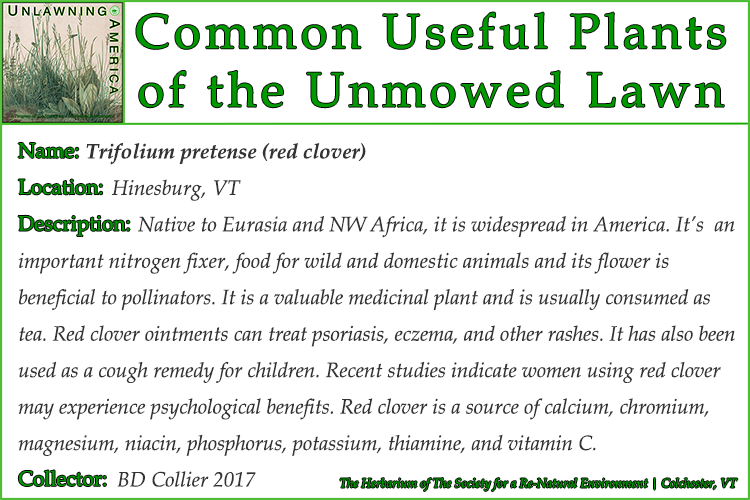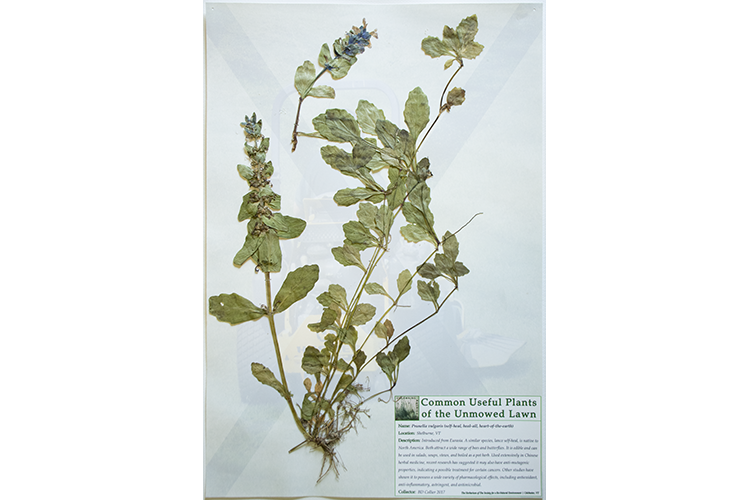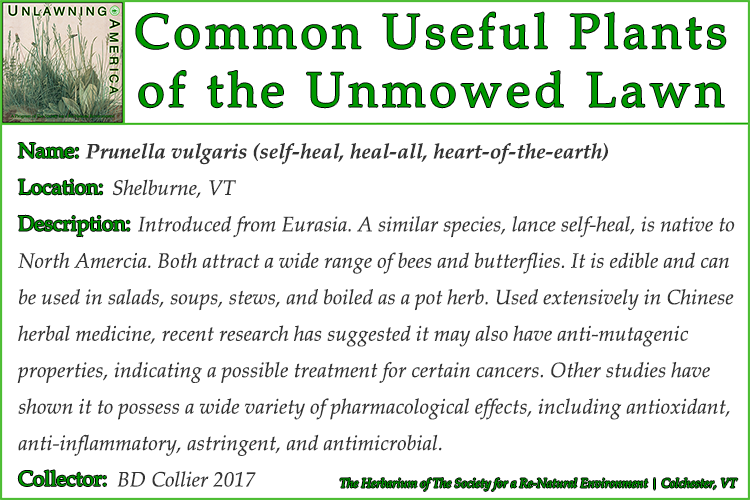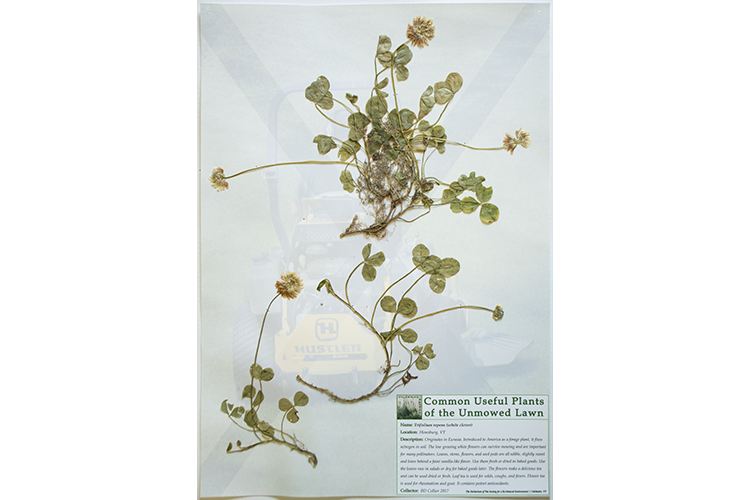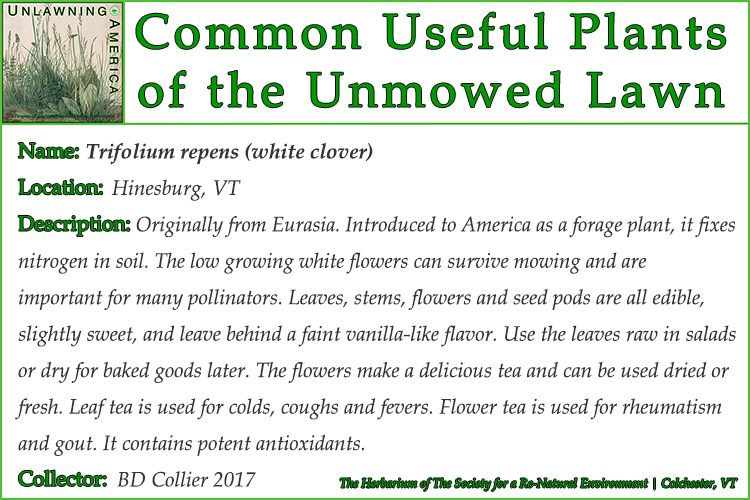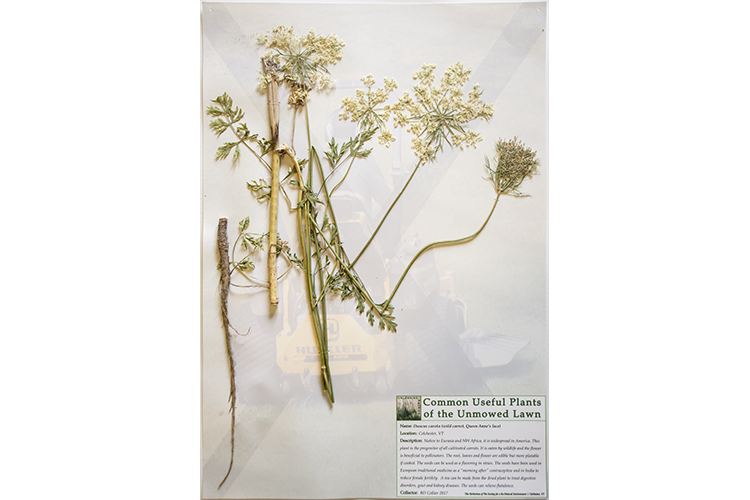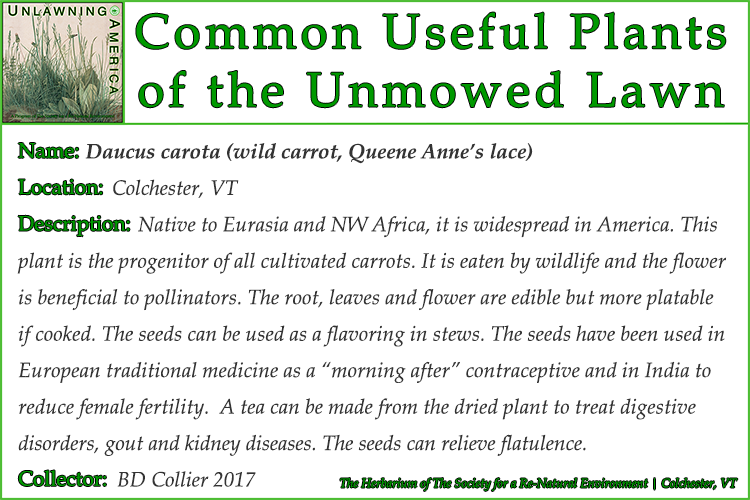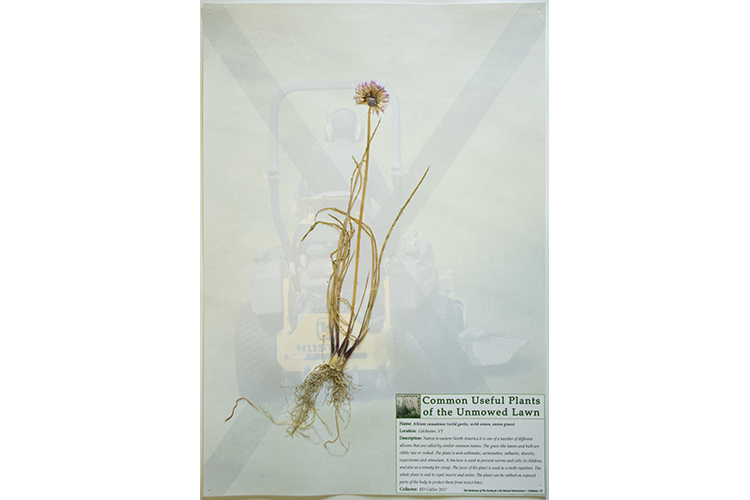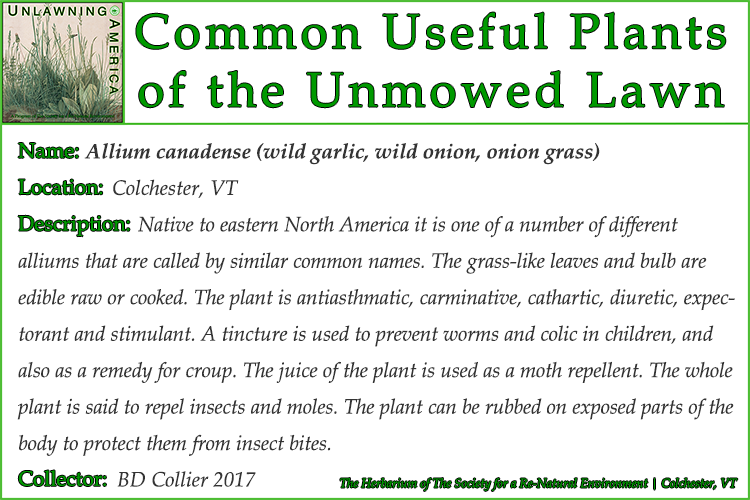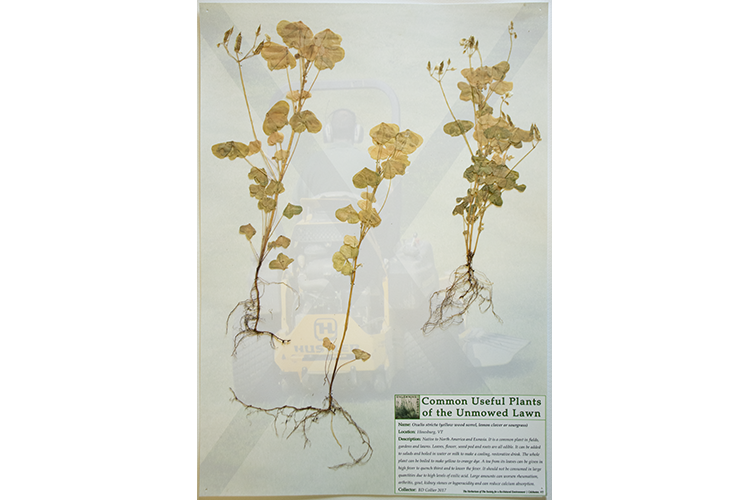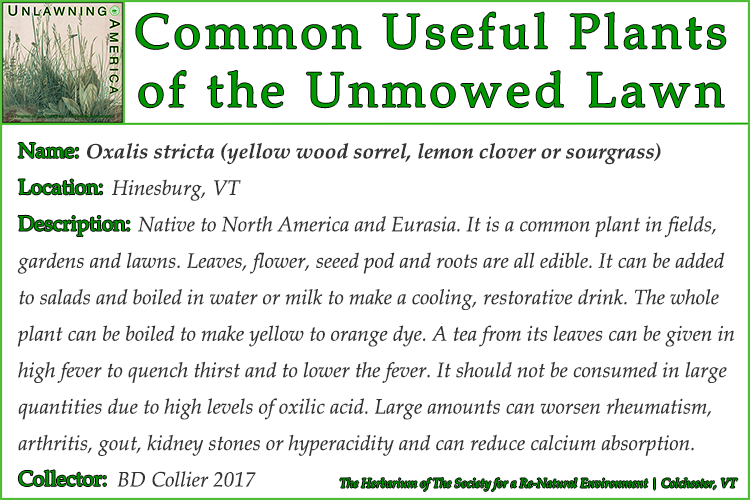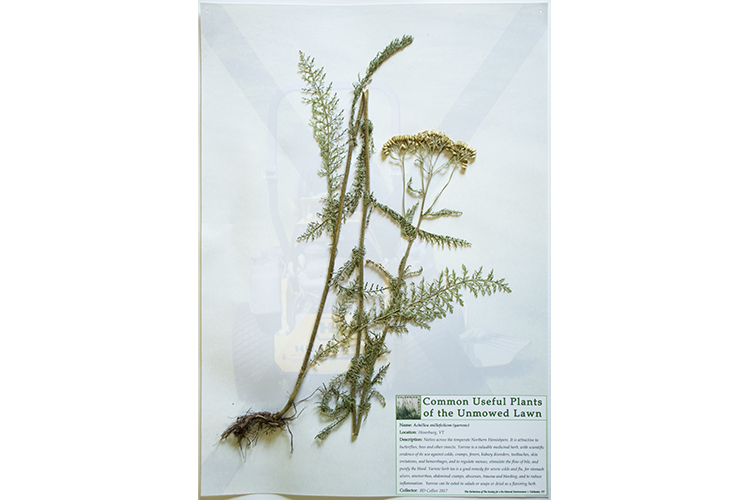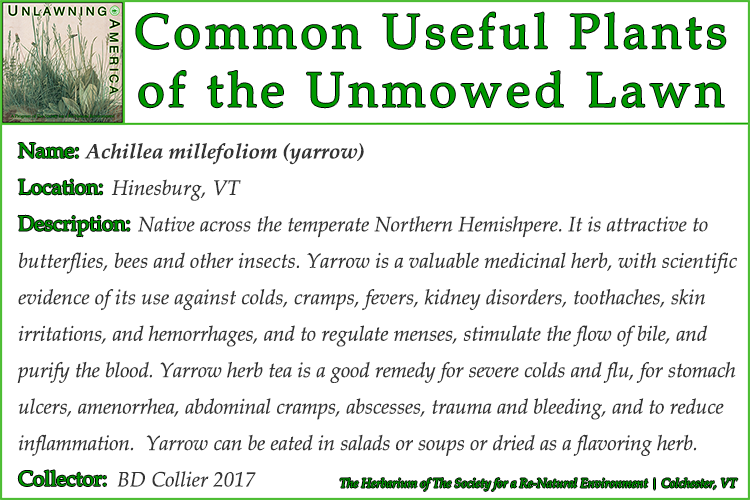UA home | introduction | strategies | herbarium | sites | video | artifacts | allies | flora-fauna | research | contact
The Herbarium of The Society for a Re-Natural Environment
Most lawns contain a surprising number and diversity of seeds and plants. Even a farmed sod treated with chemicals will aquire an increasing number of seeds distributed by wind or animals over time. Once the suppressive activities of mowing and chemical treatments stop these plants will begin to grow and you'll begin to see what’s there. Aside from a few problematic species, you can just let these grow and see the number of pollinators increase.
Many plants we label "weeds" growing in lawns are often edible or medicinal plants that were intentionally introduced here by European colonists. The prime example of a plant that has been wrongly vilified by the lawn care industry is the dandelion. Before the dominance of lawns, the blossoms, leaves and roots of dandelions were more likely to be praised as a bounty of food and medicine. They were well known to ancient Egyptians, Greeks and Romans, and have been used in Chinese traditional medicine for over a thousand years. Dandelions arrived in North America with the first European colonists as an edible and medicinal plant. Dandelions are more nutritious than most of the vegetables in your garden. They have more vitamin A than spinach, more vitamin C than tomatoes, and are a powerhouse of iron, calcium and potassium. Dandelions are also good for your lawn. Their wide-spreading roots loosen hard-packed soil, aerate the earth and help reduce erosion. The deep taproot pulls nutrients from deep in the soil and makes them available to other plants. Dandelions actually fertilize the grass. Since they are one of the earliest blooming flowers, they are an important food source for pollinators emerging in spring.
